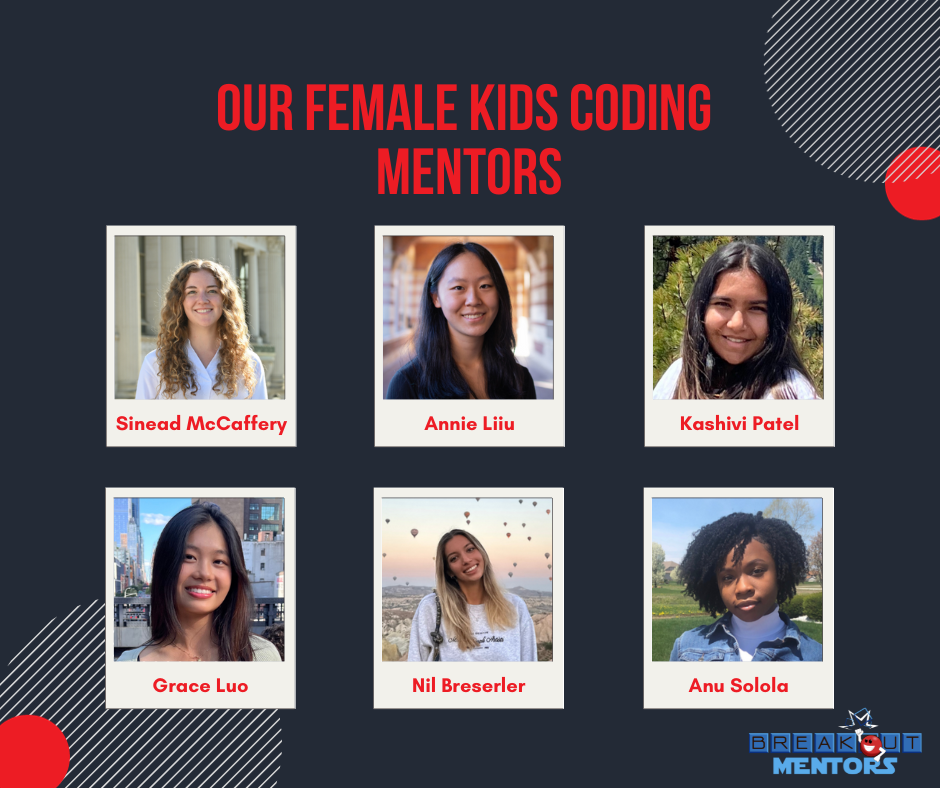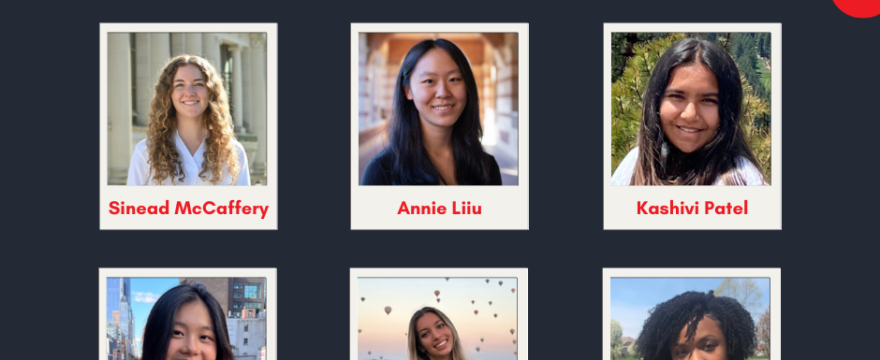Studies show that as few as 8-10% of all programmers are female. My company even tried to brag that we had 11% women software developers (I work full-time as an engineer there and part-time for Breakout Mentors). This is very typical in the tech industry!
Sadly, the male dominated environment isn’t appealing for girls to pursue, but it is still worth pushing through. This article will explore how to reverse the trend. Each individual is important, so along the way we’ll give advice on how to help the young ladies in your life unlock the incredible benefits of computer science skills.
Attracting Girls to Coding

So how do we attract girls to coding? Spoiler alert: it’s not by making it pink.
Most girls are naturally more creative and more concerned with making a positive impact on the world. This is a generalization, so of course it doesn’t hold for everyone – there are many exceptions. While these are great strengths when it comes to problem solving in industry, our coding classes aren’t always designed to support these.
How can you use this natural creativity to your advantage with respect to computer programming? By stressing that coding is a creative process! Allow her to make whatever she is interested in, whether it be an interactive story, art program, or a video game designing outfits.
Recently, Breakout Mentors was working with a young student who wanted to learn a useful web dev skill. Even though she was too young to share her resume online, we built a resume for one of her stuffed animals. The result was amazing! She crafted a whole life story and narrative for the fictional character.
Creativity First Coding
A standardized introduction to programming through an online tutorial that does not embrace these differences and may prove ineffective in holding a girl’s interest. Programming isn’t creative enough for everyone to want to focus on it, but that doesn’t mean coding isn’t a useful skill.
It is crazy how useful coding can be in almost any field. You might initially think of it but even dance can use CS. Check out this video:
One of the primary environmental factors limiting female involvement in coding is the fact that it is currently predominantly boys. This is somewhat of a chicken and egg problem, but you can get around it by narrowing your scope. Don’t focus on changing the world, just your immediate environment!
Classroom Gender Gap

Research has shown that girls participate more and have better outcomes in STEM classes when there are no boys present. While sadly we can’t change university programming classes and Silicon Valley companies ourselves, we have the ability to create our own learning environments.
Breakout Mentors works 1-on-1 with students, which means there isn’t a room full of nerdy boys to make the girls self-conscious. We actually have a lot of girls working with our mentors. Up to 40% of our students are girls.
Another alternative is to rally together a group of girls to take a class together – even if the rest of the class is boys, they will still have each other, greatly increasing their fun and thus improving the likelihood they stick with it. For example, when I wanted to take computer science in high school I invited 5 friends to take the class with me. I think 4 of us are programmers today. Thankfully things are getting better and UC Berkeley’s intro class has even had more women than men.
Female Role Models

A female mentor can have a big impact on a girls’ interest. Breakout Mentors has many talented and influential women mentors. In fact, we have a Girls Coding Academy that ensures each girl who is interested in working with a female mentor has the ability to do so.
There are also many wonderful teachers in the local school system. They will often bring in outside experts. In fact, I regularly act as a guest speaker in K-12 schools. Feel free to reach out on Linkedin if you are in the Provo, UT area.
If you don’t have a local mentor, there are also excellent online resources for girls and women in tech. NCWIT, the national center for women & information technology, hosts the Aspirations in Computing program that rewards girl high school students for their coding achievements. They also run Technolochicas which supports Latina participation in computing and the AspireIT Impact Award which provides funding for peer-to-peer computing experiences. While they are probably the biggest nonprofit organization, there are countless more including AnitaB.org, Black Girls Code, Girls Who Code, League of Women Coders, Society of Women Engineers (SWE), Women in Tech Council (WTC), Women in Technology International (WITI) and Women Who Code.
Age Matters a Lot!
Starting young is perhaps even more important for girls than boys – if you wait too long the social stigmas will be more firmly rooted.
Stereotypes can take hold as early as middle school, but 4th and 5th graders generally lack any of these biases. If a girl already knows she enjoys programming before even reaching middle school, she is more likely to continue when reaching a high school course.
So I encourage parents to be aware that the window of opportunity might not be open as long as you think. Contact us to learn how to get your daughter started now!
Does your daughter need some convincing? Here are some fun facts that you can share so they know women might actually be more effective programmers than men:
- Women were the first computer programmers. Ada Lovelace is widely referred to as the world’s first computer programmer for the Babbage difference machine. Feel free to google that to see one really old computer. 75% of codebreakers at Bletchley Park and NASA’s computers were predominantly women. Check out “Hidden Figures” for a great uplifting movie. When engineers at Harvard discovered a moth causing a problem in one of the first computers, Grace Hopper, a female lieutenant, recorded the first computer “bug”.
- While knowing how to code is important, software developers spend somewhere between 9% and 61% of their time coding. Strong communication skills are at least as important as technical skills.
- Women might actually be better coders than men. When using GitHub, a common website to share open-source code, code written by women was approved at a higher rate (78.6%) than software code written by men (74.6%) as long as their gender wasn’t obvious from their username. Darn stereotypes that make us think otherwise.
